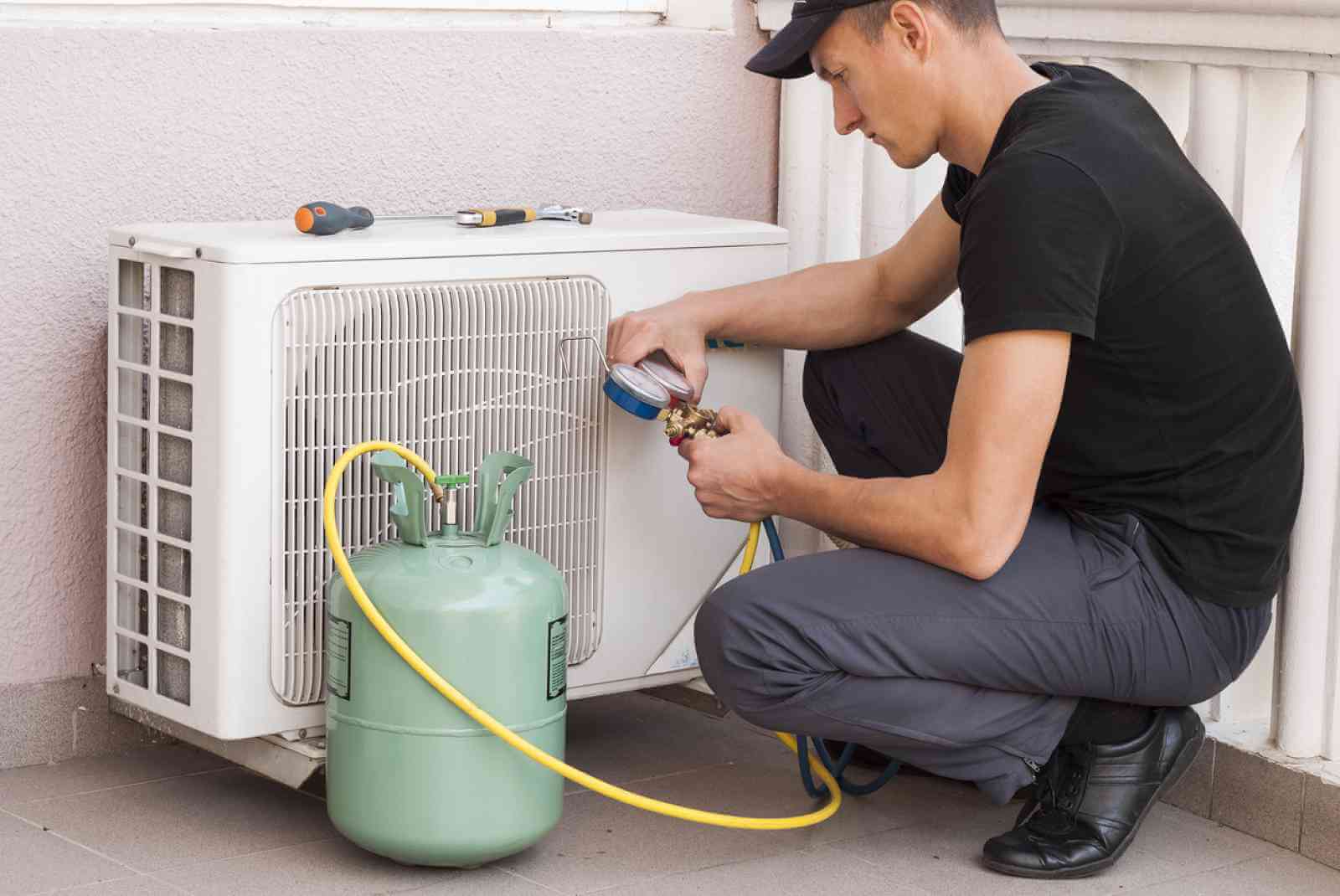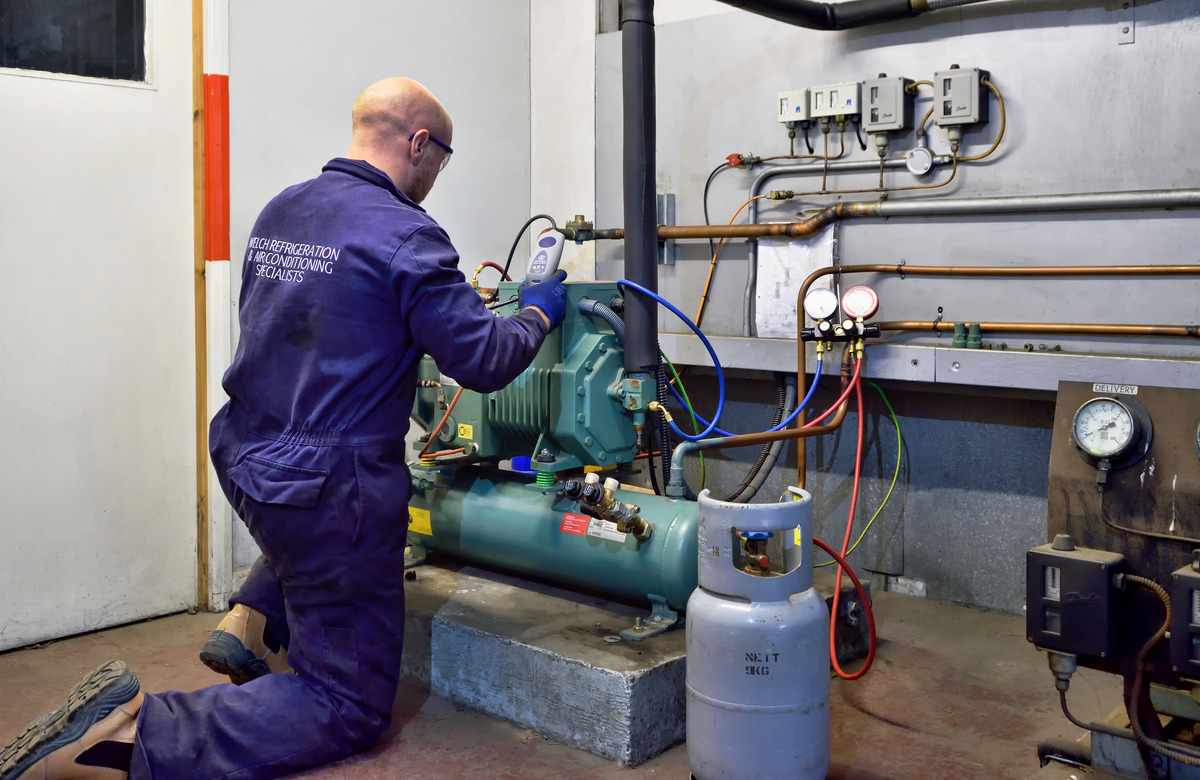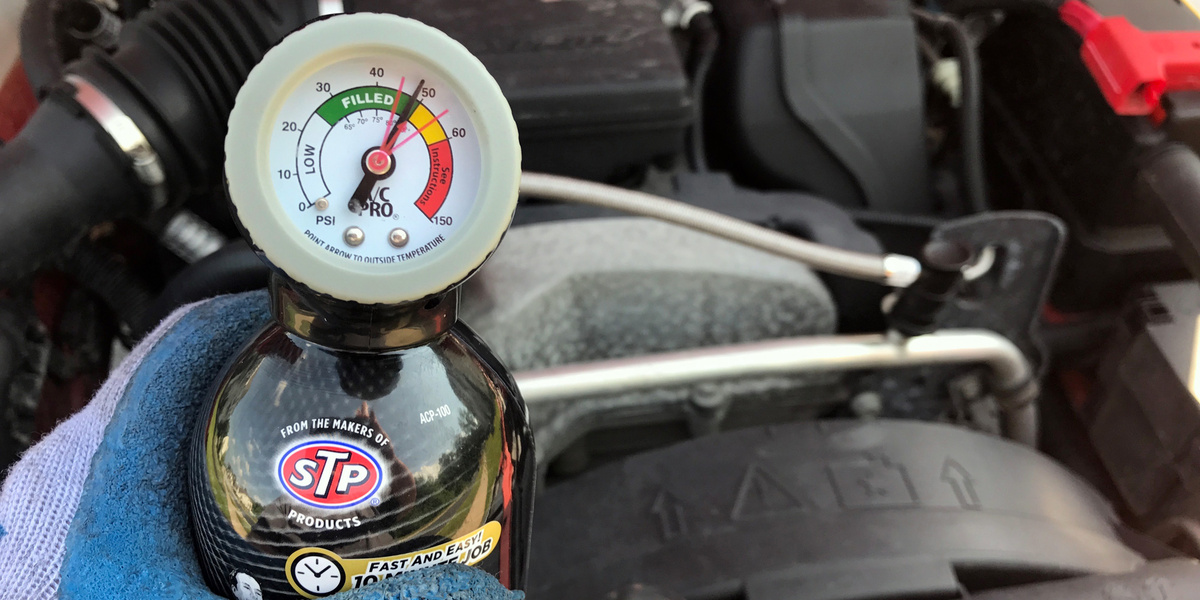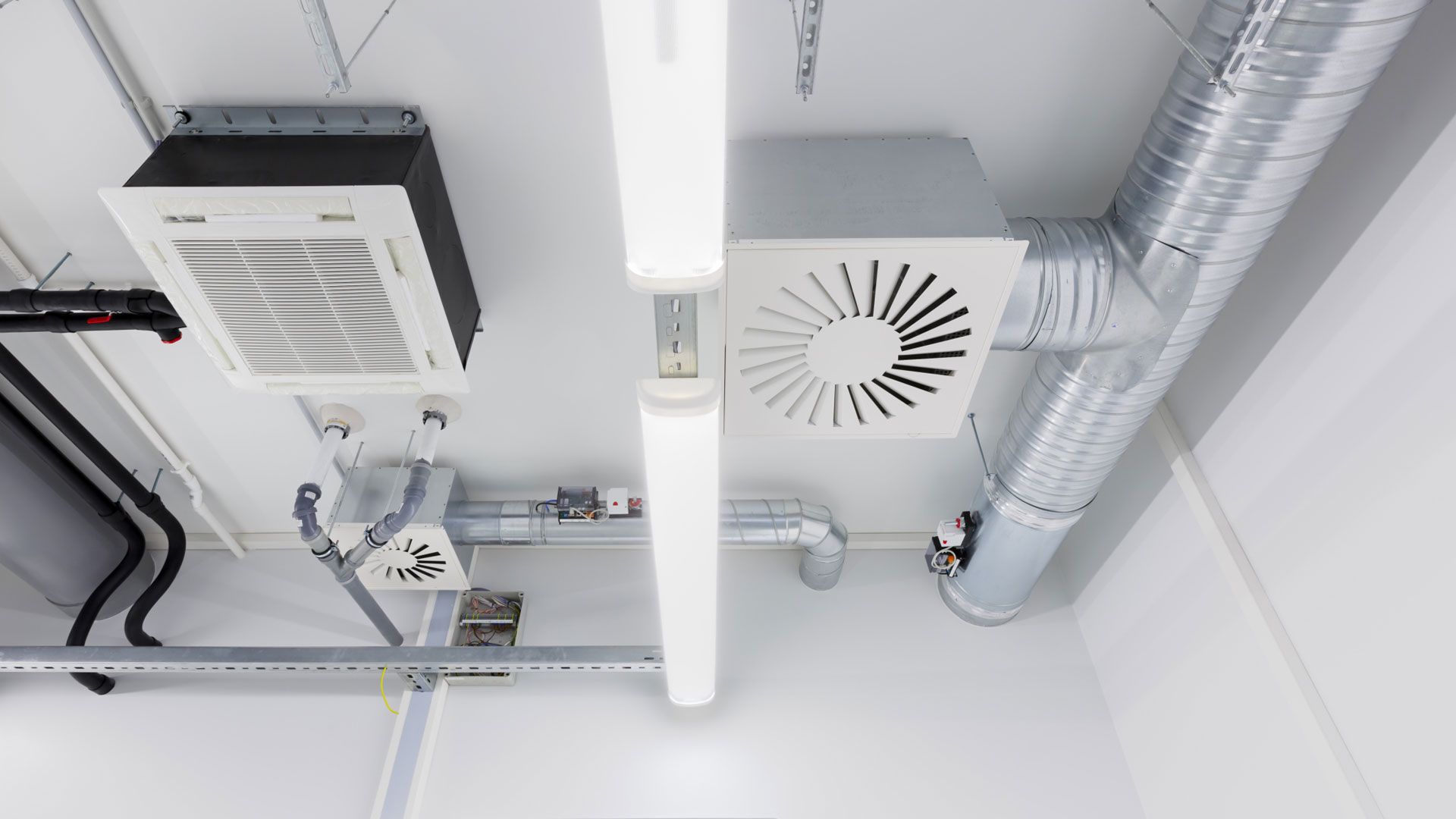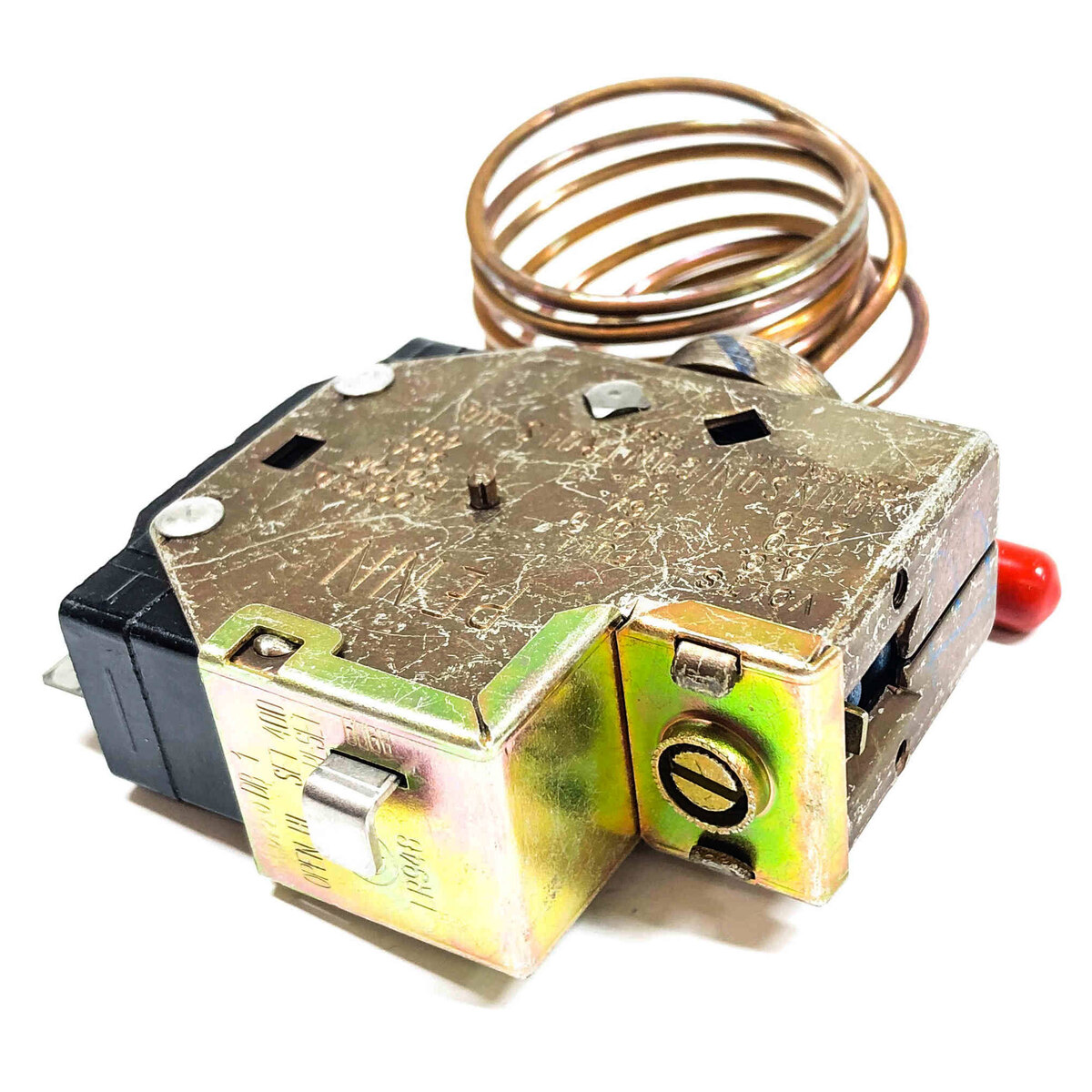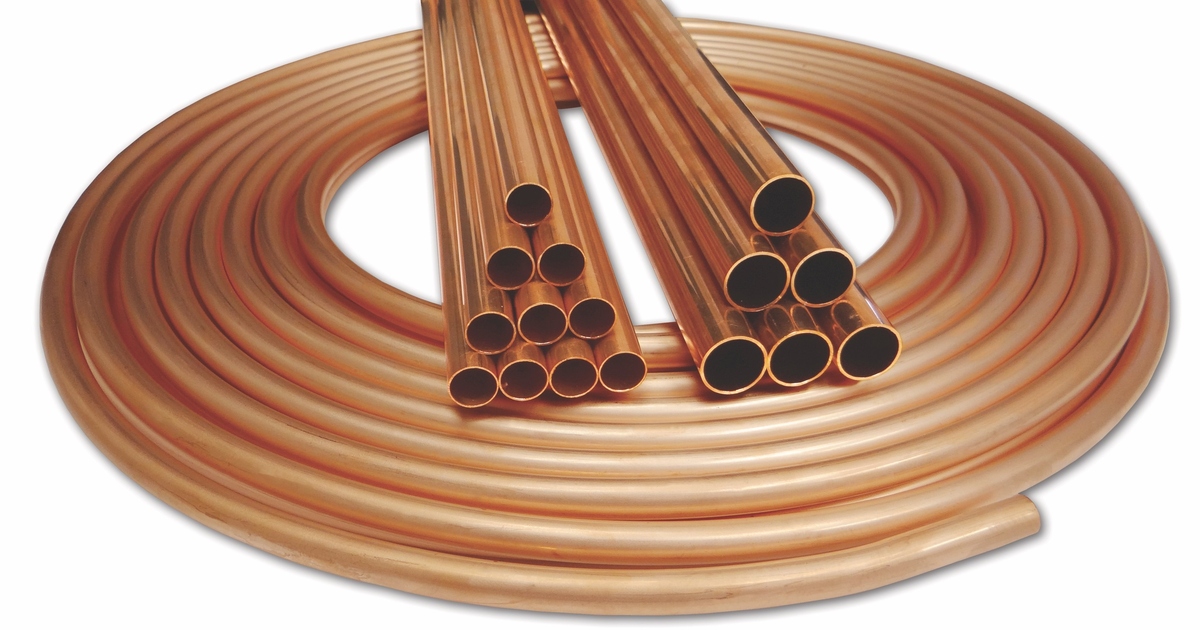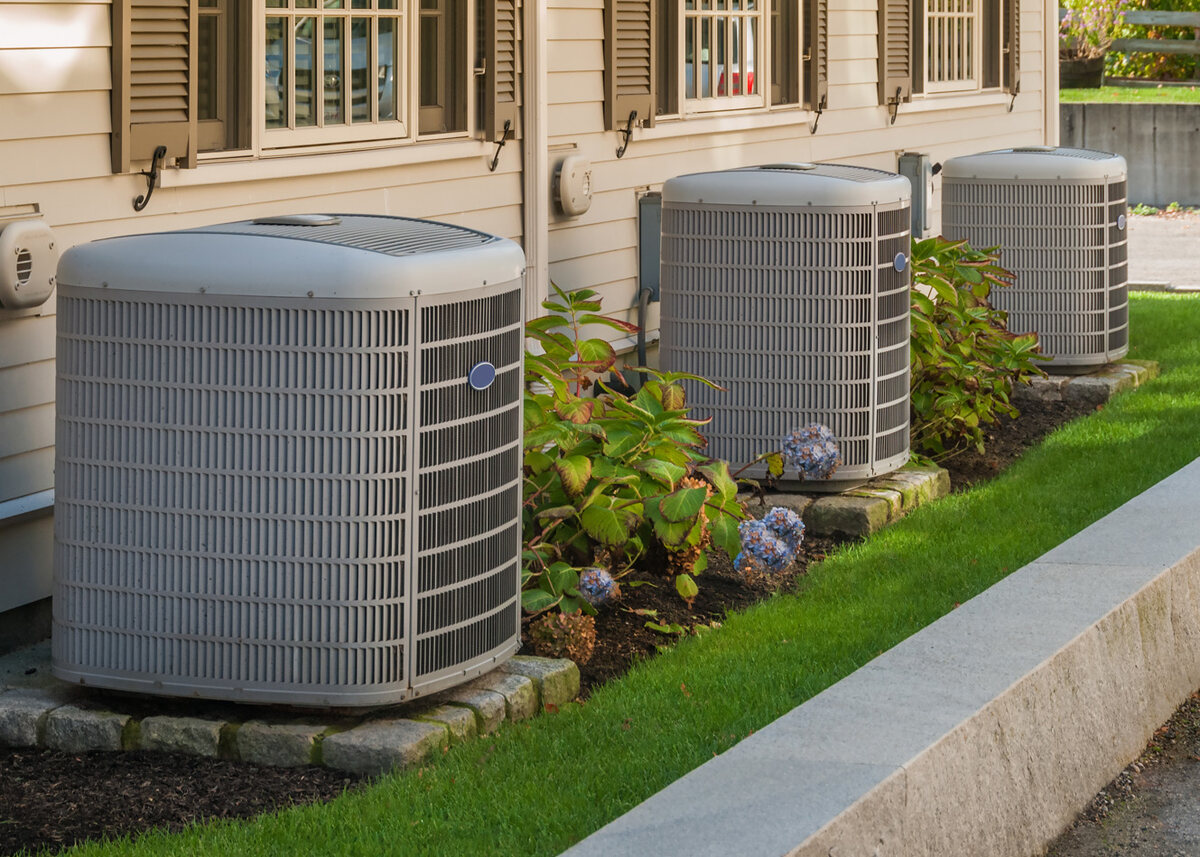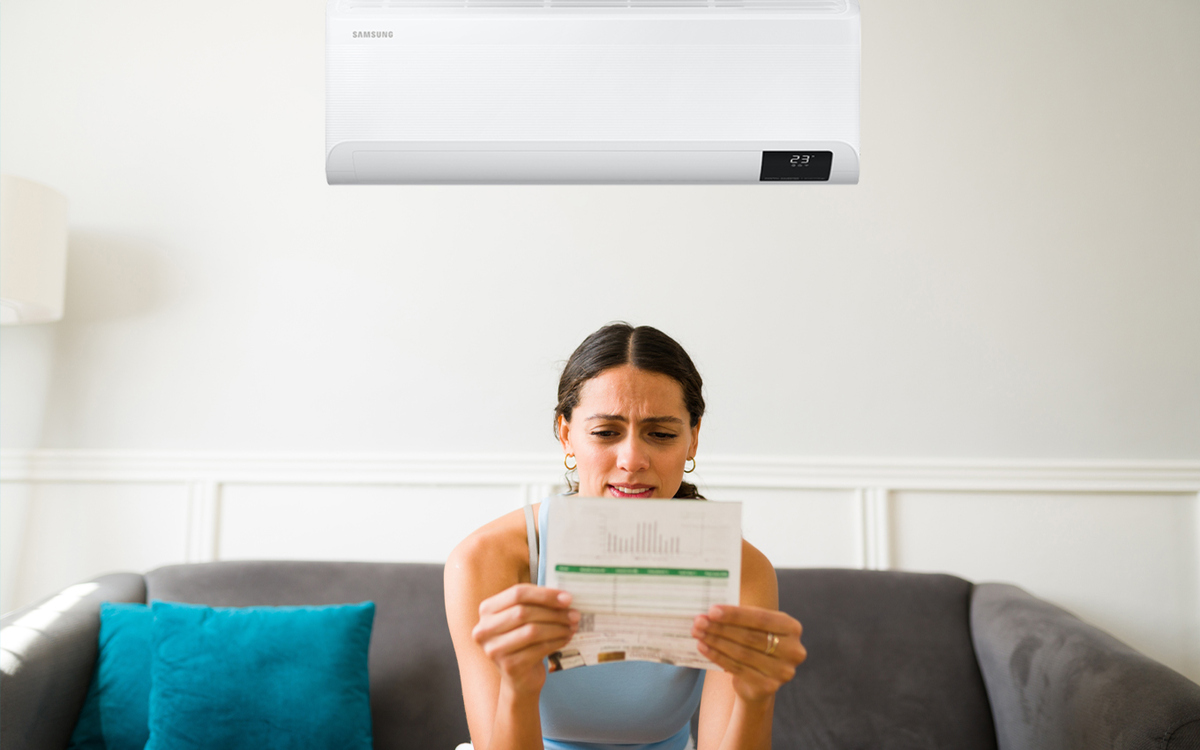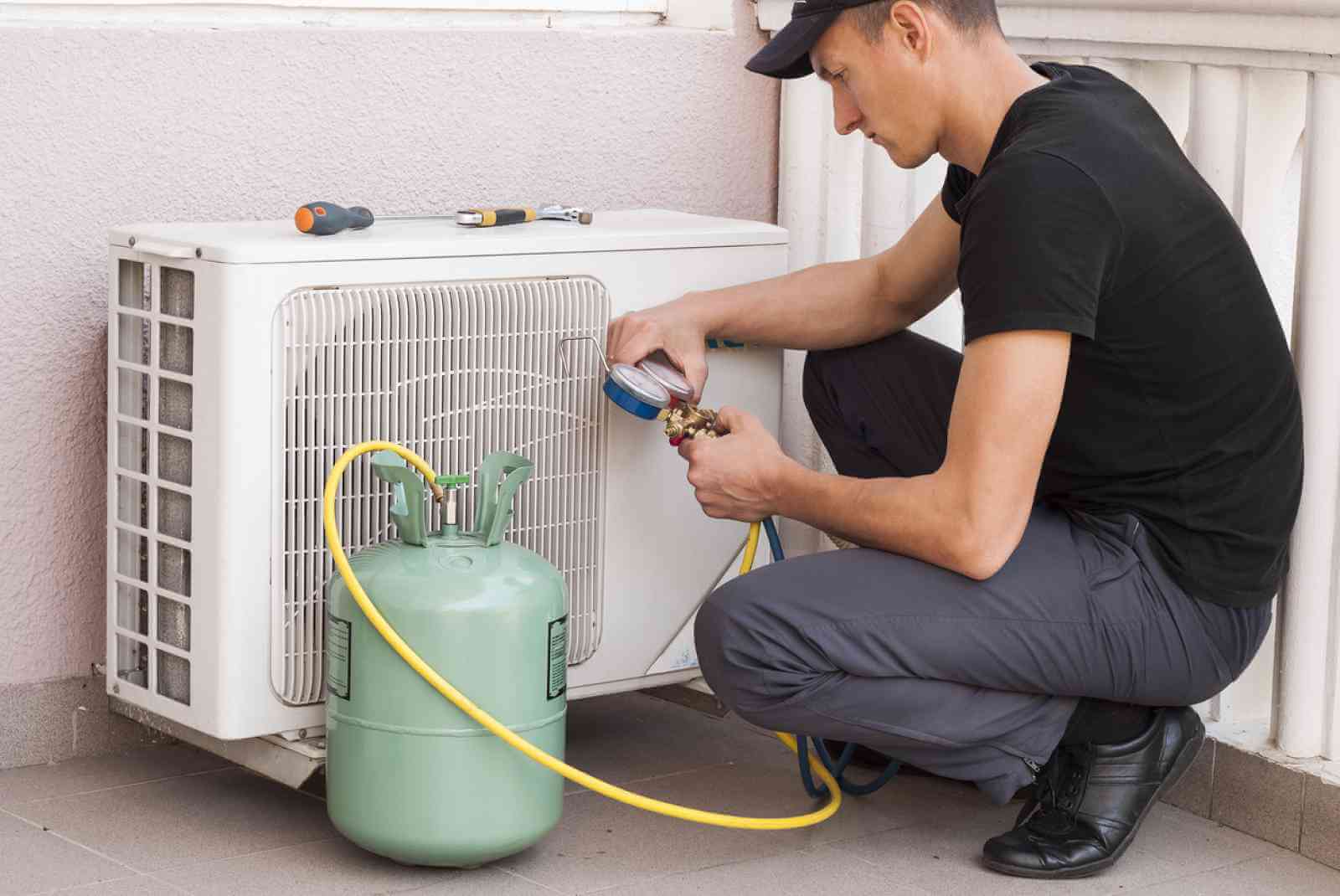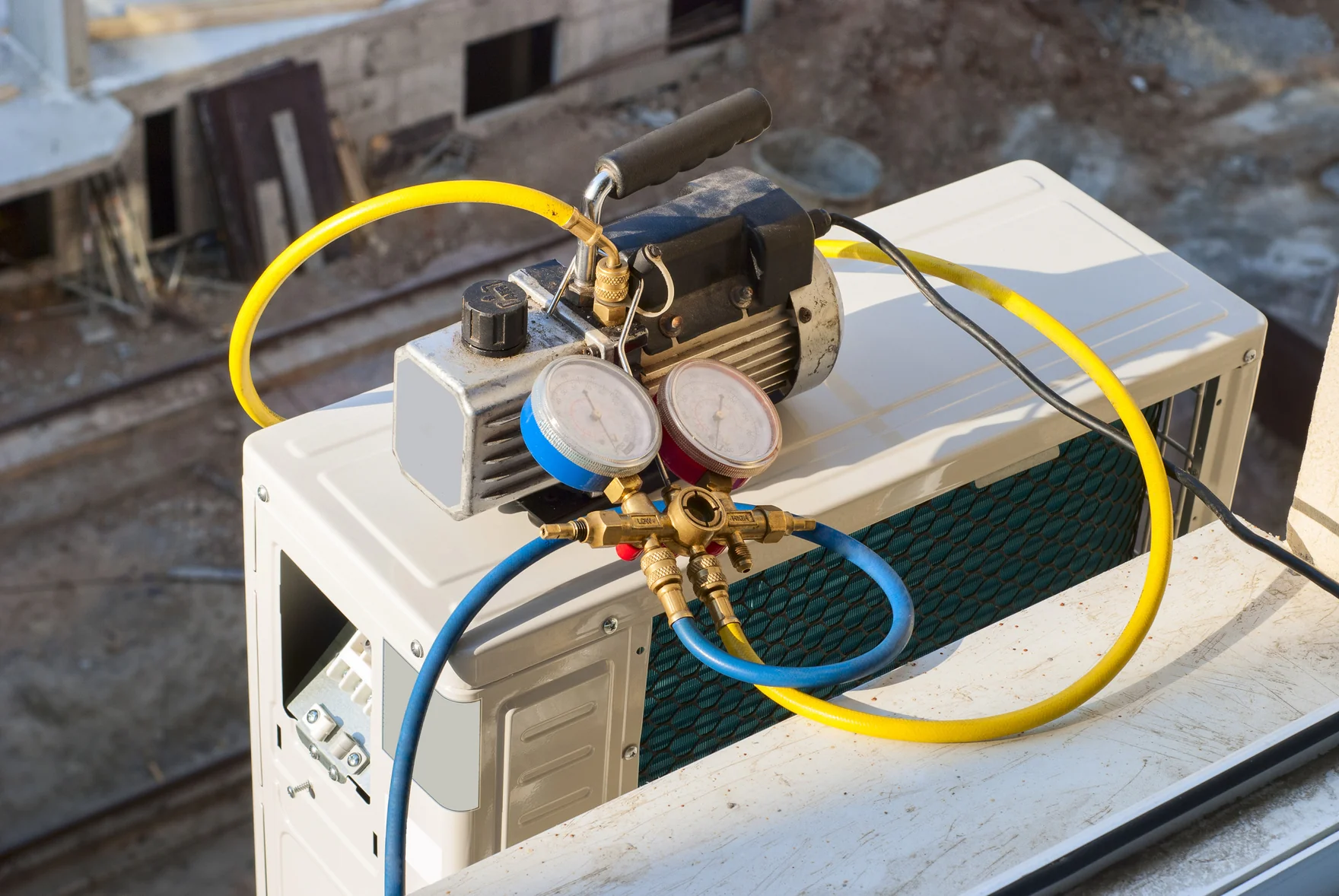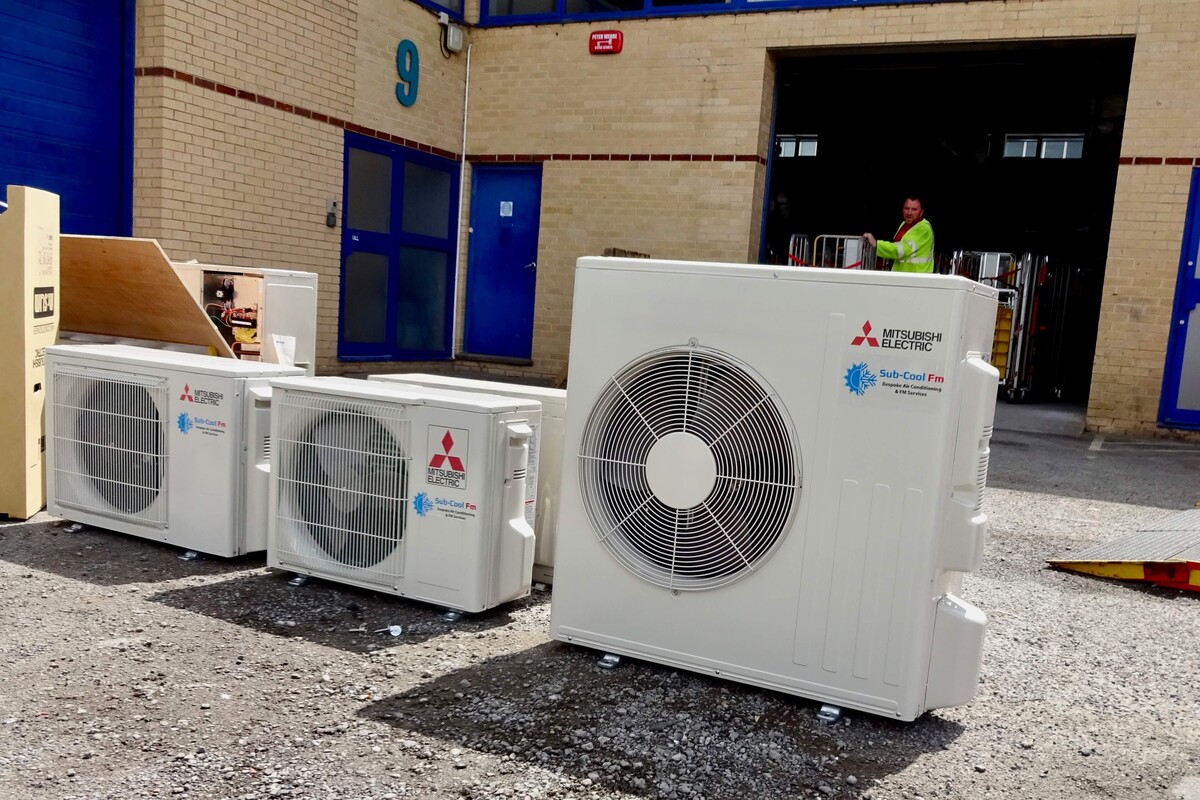Home>Home Maintenance>How To Use Avalanche Auto Air Conditioning 134A Refrigerant


Home Maintenance
How To Use Avalanche Auto Air Conditioning 134A Refrigerant
Modified: March 6, 2024
Learn how to properly use Avalanche Auto Air Conditioning 134A Refrigerant for at-home maintenance, ensuring efficient cooling for your vehicle.
(Many of the links in this article redirect to a specific reviewed product. Your purchase of these products through affiliate links helps to generate commission for Storables.com, at no extra cost. Learn more)
Introduction
Welcome to this comprehensive guide on how to use Avalanche Auto Air Conditioning 134A Refrigerant! Maintaining a cool and comfortable environment inside your vehicle during the hot summer months is essential for a pleasant driving experience. The Avalanche Auto Air Conditioning 134A Refrigerant is designed to help you achieve optimal cooling performance in your car’s air conditioning system.
In this article, we will walk you through the step-by-step process of using the Avalanche Auto Air Conditioning 134A Refrigerant to recharge your vehicle’s air conditioning system. We will also provide you with important safety precautions to ensure that the process is carried out safely and effectively.
Before we dive into the details, it’s important to note that working with automotive air conditioning systems requires a certain level of knowledge and expertise. If you are not confident in your ability to perform the tasks outlined in this guide, we recommend seeking the assistance of a professional mechanic.
Now, let’s get started by discussing some safety precautions you should keep in mind while working with automotive refrigerants.
Key Takeaways:
- Stay safe and prepared: Wear protective gear, work in a well-ventilated area, and gather all necessary materials before using Avalanche Auto Air Conditioning 134A Refrigerant to recharge your vehicle’s air conditioning system.
- Test and enjoy the cool breeze: After recharging, start the engine, set the temperature, and check airflow, temperature, and system controls to ensure a comfortable and refreshing driving experience.
Read also: 5 Best AC Refrigerant 134A for 2024
Safety Precautions
When working with automotive refrigerants like the Avalanche Auto Air Conditioning 134A Refrigerant, it is crucial to prioritize safety to prevent any accidents or injuries. Here are some essential safety precautions to follow:
- Protective Gear: Before you begin, make sure to wear protective gear such as safety glasses, gloves, and a face mask. This will safeguard you from potential chemical contact or inhalation during the refrigerant recharge process.
- Proper Ventilation: Ensure that you are in a well-ventilated area before proceeding. Automotive refrigerants can release harmful gases into the air, so working in an open or well-ventilated space can minimize the risk of inhalation.
- Avoid Open Flames: Keep all sources of ignition, including cigarettes, open flames, and sparks, away from the refrigerant. These substances can cause the refrigerant to ignite or explode, leading to severe injuries.
- Keep Children and Pets away: It is important to create a safe working environment by keeping children and pets away from the area. Refrigerant cans and tools can be hazardous if mishandled, so it’s best to work in an isolated space.
- Read and Follow Instructions: Carefully read and follow the instructions provided by the manufacturer on the refrigerant can. Each brand may have specific guidelines and recommendations for usage, which must be adhered to for the safety of both yourself and your vehicle.
- Check Compatibility: Ensure that the Avalanche Auto Air Conditioning 134A Refrigerant is compatible with your specific vehicle make and model. Consult your vehicle’s owner manual or contact a trusted mechanic to confirm compatibility.
- Known Allergies: If you have any known allergies or sensitivities to chemicals, it is advisable to refrain from directly handling or inhaling the refrigerant. Instead, seek assistance from a professional who can safely recharge your vehicle’s air conditioning system.
Remember, safety should always be your top priority when working with automotive refrigerants. By following these precautions, you can ensure a safer and more efficient recharge process.
Gathering Materials
Before you begin the process of recharging your vehicle’s air conditioning system with the Avalanche Auto Air Conditioning 134A Refrigerant, it is important to gather all the necessary materials. Having everything at hand will make the process smoother and more efficient. Here are the materials you will need:
- Avalanche Auto Air Conditioning 134A Refrigerant: Obtain a can of the Avalanche Auto Air Conditioning 134A Refrigerant, ensuring that it is compatible with your vehicle’s make and model. You can purchase this refrigerant from automotive supply stores or online.
- Pressure Gauge: A pressure gauge will allow you to monitor the pressure in your vehicle’s air conditioning system accurately. This will help ensure that you do not overfill or underfill the system during the recharge process. Make sure to choose a pressure gauge that is compatible with automotive use.
- Protective Gear: As mentioned in the safety precautions section, it is essential to protect yourself during the process. Wear safety glasses, gloves, and a face mask to shield yourself from the refrigerant and other chemicals.
- Basic Toolkit: You may need a basic toolkit that includes wrenches, pliers, and a screwdriver to access certain parts of your vehicle, such as the low-pressure port, as we progress through the recharge process.
- Clean Cloth or Towel: Keep a clean cloth or towel handy to wipe any spills or leaks that may occur during the process. This will help prevent any damage to your vehicle’s interior.
- Instruction Manual or Online Resource: It is always a good idea to have the instruction manual or access to reliable online resources that provide step-by-step guidance specifically for your vehicle make and model. This will ensure that you have accurate information tailored to your unique requirements.
- Container for Used Refrigerant: Ensure you have a suitable container to collect any used or excess refrigerant. Properly disposing of the used refrigerant is crucial to prevent environmental pollution and adhere to local regulations.
By gathering these materials beforehand, you will save time and have a more organized approach to recharging your vehicle’s air conditioning system with the Avalanche Auto 134A Refrigerant. Now that you have everything ready, it’s time to prepare your vehicle for the recharge process.
Preparing Your Vehicle
Before you can begin recharging your vehicle’s air conditioning system with the Avalanche Auto Air Conditioning 134A Refrigerant, it is important to properly prepare your vehicle. Follow these steps to ensure a smooth and successful recharge process:
- Find a Suitable Location: Park your vehicle in a flat and well-ventilated area. This will provide you with enough space to move around and work comfortably.
- Switch Off the Engine: Make sure to turn off your vehicle’s engine before beginning the recharge process. This will prevent any accidents or mishaps while working on the air conditioning system.
- Open the Hood: Pop the hood of your vehicle and secure it in place using the prop rod or hood latch. This will give you easy access to the engine compartment and the air conditioning system components.
- Inspect the System: Take a moment to visually inspect the air conditioning system components for any obvious signs of damage or leaks. Check the hoses, connectors, and other parts for cracks, wear, or loose fittings. If you notice any issues, it is recommended to have them repaired or replaced by a professional before proceeding.
- Clean the Vent Openings: Clean the vent openings on the exterior of your vehicle using a soft brush or cloth. This will remove any debris or dirt that may obstruct the proper airflow through the vents.
- Prepare the Refrigerant Can: Shake the Avalanche Auto Air Conditioning 134A Refrigerant can according to the manufacturer’s instructions. This will ensure that the refrigerant is well-mixed and ready for use.
- Ensure Proper Working Conditions: Double-check that you are wearing the necessary protective gear, such as safety glasses, gloves, and a face mask. Confirm that you have the required tools and materials within reach.
By following these steps to prepare your vehicle, you are setting the foundation for a successful recharge process. Now that your vehicle is ready, we can move on to the next step, which involves locating the low-pressure port.
Locating the Low-Pressure Port
In order to properly recharge your vehicle’s air conditioning system with the Avalanche Auto Air Conditioning 134A Refrigerant, you need to locate the low-pressure port. The low-pressure port is a crucial component as it allows you to connect the refrigerant can to the system. Follow these steps to find the low-pressure port:
- Refer to the Owner’s Manual: The most reliable source for locating the low-pressure port is your vehicle’s owner’s manual. The manual will provide detailed information and illustrations specific to your vehicle make and model.
- Check Under the Hood: In many vehicles, the low-pressure port is located on the larger of the two refrigerant lines coming from the compressor. The lines are typically made of aluminum or metal and have a valve cover. The low-pressure port valve may have a blue or black cap labeled with an “L” or the word “Low.”
- Inspect the Engine Compartment: Look for any labels or markings indicating the location of the low-pressure port. These labels can sometimes be found on the engine cover, near the radiator, or on the firewall.
- Identify the Correct Port: The low-pressure port is typically larger in diameter compared to the high-pressure port. It is important to ensure that you are connecting the refrigerant can to the correct port to avoid any damage or issues with the air conditioning system.
- Refer to Online Resources: If you are unable to locate the low-pressure port using the above methods, you can also refer to reliable online resources or forums specific to your vehicle make and model. These resources often provide guidance from experienced individuals who may have encountered similar situations.
Once you have successfully located the low-pressure port, you are ready to proceed to the next step, which involves attaching the refrigerant can to the system. Properly connecting the refrigerant can is crucial to ensure a safe and effective recharge process, which we will discuss in the following section.
Read also: 5 Amazing AC Gauges 134A for 2024
Attaching the Refrigerant Can
Now that you have located the low-pressure port, it’s time to attach the Avalanche Auto Air Conditioning 134A Refrigerant can to your vehicle’s air conditioning system. Follow these steps to ensure a proper and secure attachment:
- Inspect the Can: Before you begin, check the refrigerant can for any signs of damage or leaks. It is important to use a can that is in good condition to avoid any issues during the recharge process.
- Remove the Cap: Remove the cap from the top of the refrigerant can. Most cans come with a screw-on cap that can be unscrewed by hand. Set the cap aside in a safe place as it may be needed later.
- Locate the Port: Position yourself near the low-pressure port, ensuring that you have clear visibility and access to the area.
- Connect the Adapter: Some refrigerant cans may come with an adapter that needs to be attached to the low-pressure port. Follow the manufacturer’s instructions provided with the refrigerant can to securely connect the adapter to the port.
- Attach the Hose: If your refrigerant can comes with a hose, connect one end of the hose to the adapter or directly to the low-pressure port. Ensure a tight and secure connection to prevent any leaks during the recharge process.
- Secure the Can: Hold the refrigerant can upright and firmly attach the other end of the hose to the top of the can. Ensure that the connection is tight and secure to prevent any leakage during the recharge process.
- Double-check Connections: Once the can is securely attached, double-check all the connections to ensure they are properly tightened. Any loose connections can result in a loss of refrigerant or compromised performance.
By following these steps, you can safely and effectively attach the Avalanche Auto Air Conditioning 134A Refrigerant can to your vehicle’s air conditioning system. The next step is to add the refrigerant to the system, which we will cover in the following section.
When using Avalanche Auto Air Conditioning 134A Refrigerant, always wear protective gloves and goggles to prevent skin and eye irritation. Make sure to follow the manufacturer’s instructions for proper usage and disposal of the refrigerant.
Adding the Refrigerant
With the refrigerant can securely attached to the low-pressure port of your vehicle’s air conditioning system, you can now proceed to add the Avalanche Auto Air Conditioning 134A Refrigerant. Follow these steps to ensure a proper and controlled addition of the refrigerant:
- Start the Engine: Start your vehicle’s engine and allow it to run idle. This will help circulate the refrigerant through the system as you add it.
- Set the Air Conditioning to Max: Set the temperature control to the maximum cool setting and ensure that the air conditioning system is turned on. This will allow for proper operation and distribution of the refrigerant.
- Open the Valve: Open the valve on the refrigerant can by turning it counterclockwise. This will allow the refrigerant to flow into the system.
- Controlled Dispensing: Slowly and evenly squeeze the refrigerant can, dispensing the refrigerant into the system. Be cautious not to dispense too quickly or in large bursts, as this can cause irregular pressure levels and potential damage.
- Monitor the Pressure Gauge: While adding the refrigerant, keep a close eye on the pressure gauge. Ensure that the pressure is within the recommended range specified by the manufacturer for your vehicle. Avoid overfilling the system, as it can lead to decreased performance and potential damage.
- Observe the Can: Monitor the refrigerant can as you dispense. As the refrigerant is added to the system, the can will begin to feel cold. This is a good indication that the refrigerant is flowing properly.
- Dispense Correct Amount: Refer to the manufacturer’s instructions or the information provided on the refrigerant can to determine the correct amount of refrigerant to be dispensed. It is important not to exceed this recommended amount.
- Control the Flow: If you notice any irregular pressure or flow from the can, pause the dispensing process and assess the situation. Adjust the flow rate or troubleshoot any potential issues before continuing.
By following these steps, you can add the Avalanche Auto Air Conditioning 134A Refrigerant to your vehicle’s air conditioning system safely and effectively. Once you have added the required amount of refrigerant, it’s time to move on to the next step, which involves checking the pressure in the system.
Checking the Pressure
After adding the Avalanche Auto Air Conditioning 134A Refrigerant to your vehicle’s air conditioning system, it is important to check the pressure to ensure that it is at the optimal level. Monitoring the pressure will help ensure the proper functioning of the system and avoid any potential issues. Follow these steps to check the pressure:
- Use the Pressure Gauge: Attach a pressure gauge to the low-pressure port of your vehicle’s air conditioning system. Ensure a secure connection to get an accurate reading.
- Turn on the Vehicle: Start your vehicle’s engine and allow it to run idle. This will help circulate the refrigerant through the system.
- Monitor the Gauge: Observe the pressure gauge and note the reading. It should fall within the recommended range specified by the vehicle manufacturer or the refrigerant can instructions.
- Compare with Recommended Pressure: Refer to the vehicle owner’s manual or the information provided with the refrigerant can to determine the ideal pressure range for your specific vehicle. Compare the reading on the gauge with this recommended range.
- Adjust if Necessary: If the pressure reading is too low, you may need to add more refrigerant to the system. Follow the manufacturer’s instructions and repeat the process accordingly. If the pressure reading is too high, you may need to release some refrigerant from the system. Be cautious and follow proper disposal procedures for refrigerants.
- Monitor for Stability: After adjusting the pressure, observe the gauge for a stable reading. The pressure should remain within the recommended range consistently while the air conditioning system is in operation.
- Consult a Professional if Needed: If you are unsure about the pressure readings or encounter any issues, it is best to consult a professional mechanic or seek assistance from an air conditioning specialist. They will have the expertise and tools to diagnose and resolve any potential problems.
Checking the pressure after adding the refrigerant is an important step to ensure the optimal performance of your vehicle’s air conditioning system. By following these steps and taking the necessary actions, you can maintain the ideal pressure and enjoy the benefits of a well-functioning air conditioning system.
Removing the Can
Once you have checked the pressure and confirmed that it is within the recommended range, it is time to remove the Avalanche Auto Air Conditioning 134A Refrigerant can from your vehicle’s air conditioning system. Properly removing the can is essential for the safety and maintenance of your system. Follow these steps:
- Close the Valve: Start by closing the valve on the refrigerant can. Turn it clockwise to seal the can and prevent any additional release of refrigerant.
- Relieve the Pressure: To release any remaining pressure in the system, gently press the valve on the low-pressure port or use a small screwdriver to press on the valve’s center pin. This will allow any excess refrigerant to escape safely.
- Disconnect the Hose: Carefully disconnect the hose that is attached to the low-pressure port. Be cautious as there may still be a small amount of pressure or refrigerant remaining in the system. Point the hose away from your face and body.
- Secure the Cap: If your refrigerant can came with a screw-on cap, retrieve it and secure it back onto the can. This will prevent any accidental leaking or spills.
- Properly Store the Can: If you have any remaining refrigerant in the can, make sure to store it in a cool, dry place away from direct sunlight and extreme temperatures. Refer to the manufacturer’s guidelines for proper storage instructions.
- Dispose of Used Can Properly: Properly dispose of the empty refrigerant can according to local regulations. Many municipalities have specific guidelines for the disposal of aerosol cans, so check with your local waste management agency or recycling center for instructions.
- Inspect the Area: Take a moment to inspect the surrounding area for any spills or leaks. If you notice any, clean them up promptly and dispose of any contaminated materials properly.
- Double-check the Connections: Before closing the hood of your vehicle, double-check all the connections to ensure that everything is properly tightened and secure. This will help prevent any potential issues or leaks in the future.
By following these steps, you can safely and effectively remove the Avalanche Auto Air Conditioning 134A Refrigerant can from your vehicle’s air conditioning system. By storing and disposing of the can appropriately, you contribute to maintaining a safe and clean environment.
Testing the Air Conditioning
Now that you have successfully recharged your vehicle’s air conditioning system with the Avalanche Auto Air Conditioning 134A Refrigerant, it’s time to test the system to ensure that it is functioning optimally. Follow these steps to test the air conditioning:
- Start the Engine: Start your vehicle’s engine and allow it to run for a few minutes to reach normal operating temperature.
- Set the Temperature: Set the temperature control to a comfortable level, preferably lower than the ambient temperature.
- Turn on the Air Conditioning: Turn on the air conditioning system by pressing the corresponding button or switch on your vehicle’s control panel.
- Check Airflow: Stand in front of the air conditioning vents and check if there is a steady and strong airflow. The air should be consistently cold and refreshing. If you notice weak airflow or warm air, it may indicate an issue with the system that requires further inspection or repair.
- Observe the Temperature: Observe the temperature inside your vehicle as the air conditioning system operates. It should gradually decrease and maintain a cool and comfortable temperature. If the temperature remains high or continues to rise, there may be a problem with the refrigerant charge or other components of the system.
- Listen for Unusual Noises: While the air conditioning system is running, listen for any unusual noises such as rattling, grinding, or hissing. These noises can indicate a mechanical issue that needs to be addressed by a professional.
- Monitor for Odors: Pay attention to any unusual odors coming from the air conditioning vents. Foul or strange smells could be a sign of mold or bacterial growth within the system, which should be addressed to ensure clean and fresh airflow.
- Test Different Controls and Modes: Test different controls and modes on your vehicle’s air conditioning system, such as adjusting the fan speed, changing the air distribution, or switching between recirculation and fresh air modes. Ensure that each function operates correctly and delivers the desired results.
By following these steps and conducting a thorough air conditioning system test, you can verify that the recharge process was successful and that your vehicle’s air conditioning system is functioning properly. If you encounter any issues or notice any abnormalities during the testing process, it is recommended to consult a professional for further assistance and evaluation.
Conclusion
Congratulations! You have successfully learned how to use the Avalanche Auto Air Conditioning 134A Refrigerant to recharge your vehicle’s air conditioning system. By following the step-by-step process outlined in this guide, you can maintain a cool and comfortable driving experience during the hot summer months.
Throughout the process, we emphasized the importance of safety precautions, such as wearing protective gear, working in a well-ventilated area, and avoiding open flames. These precautions ensure that you carry out the recharge process safely and minimize any potential risks.
We also discussed the significance of gathering the necessary materials, including the Avalanche Auto Air Conditioning 134A Refrigerant, pressure gauge, basic toolkit, and proper protective gear. Having these materials ready beforehand streamlines the recharge process and enhances efficiency.
From locating the low-pressure port to attaching the refrigerant can and adding the refrigerant, every step was carefully explained to ensure accurate and effective results. Furthermore, checking the pressure, removing the can, and testing the air conditioning system helped to ensure that the system operates optimally and delivers cool and refreshing air.
Remember, if you encounter any difficulties or are uncertain about any step in the process, it is always advisable to consult a professional mechanic or seek the assistance of an air conditioning specialist. They have the expertise and experience to guide you through the recharge process and address any potential issues that may arise.
By properly maintaining your vehicle’s air conditioning system, you can ensure its longevity and enjoy a comfortable driving experience even during the hottest summer days. Stay cool and safe on the road with the help of the Avalanche Auto Air Conditioning 134A Refrigerant and the knowledge you have gained from this comprehensive guide.
Happy driving!
Frequently Asked Questions about How To Use Avalanche Auto Air Conditioning 134A Refrigerant
Was this page helpful?
At Storables.com, we guarantee accurate and reliable information. Our content, validated by Expert Board Contributors, is crafted following stringent Editorial Policies. We're committed to providing you with well-researched, expert-backed insights for all your informational needs.
